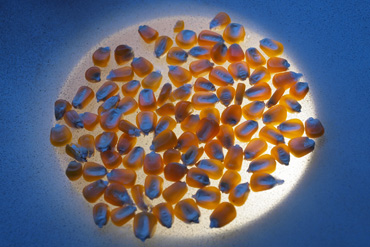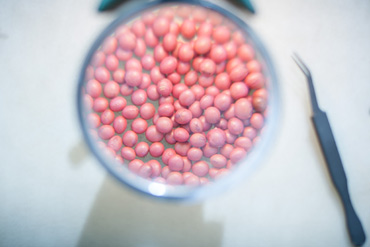Laboratory
In our laboratory we perform commercial analysis of cereals and oilseeds, seed analysis, gluten, proteins, fat and test strips (GMO and aflatoxins), among others.
We offer an excellent service and treatment, transmitting them trust and offering personalized advice, prioritizing the quality of the analyzes through the permanent controls and trainings.
We have highly qualified personnel, sufficient and necessary for the development of the service provided.
The Laboratory is accredited by INASE, Reg. No. 144, to perform seed analysis valid for all Mercosur, complying with the regulations issued by ISTA.
We are currently working on the development of a Quality Management System in line with the requirements of ISO 17025 and ISO 9001
Germinative Power is the most used test to evaluate the maximum germination potential of a seed lot. It determines the proportion of seeds that will give normal plants, abnormal plants, hard seeds, fresh and dead in ideal conditions of temperature and humidity.
Botany physical purity refers to the proportion of pure seed contained in the sample sent, discounting inert matter (pieces of seeds, other plant remains, soil) and foreign seeds (from other crops and weeds). It serves to define the kilos to be sown and to avoid introducing seeds of unwanted species.
Biochemical test that determines the percentage of viable seeds that can give rise to a normal seedling. Provides quick information for decision making.
Vigor is the sum of those properties that determine the germinative capacity of a seed subjected to stress situations. Cold Test: Test in low temperature conditions to estimate the behavior in early sowing. Accelerated aging: it is based on subjecting the seeds to conditions totally opposite to a good storage, that is to say to high temperatures and humidities. It is used to determine the differences in vigor between lots, to define destinations in the type of storage, to verify the need for pre-cleaning and / or curing in prolonged storage. Also, it allows to estimate the storage potential. Topographic test by tetrazolium in soybean is performed with the objective of making a more precise diagnosis related to the vigor condition of soybean seed lots that have the same viability status. It allows to identify damages in the seed like mechanic, bedbug, environmental, and others.
It allows the calculation of the number of seeds per kg, which is a very important information in the sowing operations and to determine the yield of the plants. In addition, the weight of the seed is positively related to the quality of the seeds.
It is a determination that allows to know if a lot of seeds has varietal mixture. It can be done by any of the following tests: Reaction of peroxidase, yarn color, hypocotyl color.
This determination is mainly used to detect the presence of seeds of undesirable or harmful species
This test is useful for understanding the effect of field handling during harvesting or conditioning on soybeans, beans and other large seed dicotyledons. It is worth to determine the mechanical, physiological, climatic, etc. damage.
- Maize
- Flint Corn
- Pop Corn
- Wheat bread
- Wheat noodle
- Brewing Barley
- Flotation Rate
- GMO, Immunotrips method (test strips)
- Aflatoxins, Immunotrips method
- Gluten (IRAM Standard 15864-1)
- Protein and Fatty Matter by N.I.R. (Soybeans, Maize, Barley, Rapeseed and Wheat)
- Humidity (by stove or humidimeter)
- Grinding ratio
- Control of humidimeters by greenhouse method
- Qualitative determination of condensed tannins
- Dry material
- Hectolitric weight by standard method
Contact
Ing. Verónica Montiel l Quality and Marketing Analyst - vmontiel@gear-sa.com
Lic. Sonia Cardone l Quality Assurement - scardone@gear-sa.com

 Solicitud de Analisis
Solicitud de Analisis

